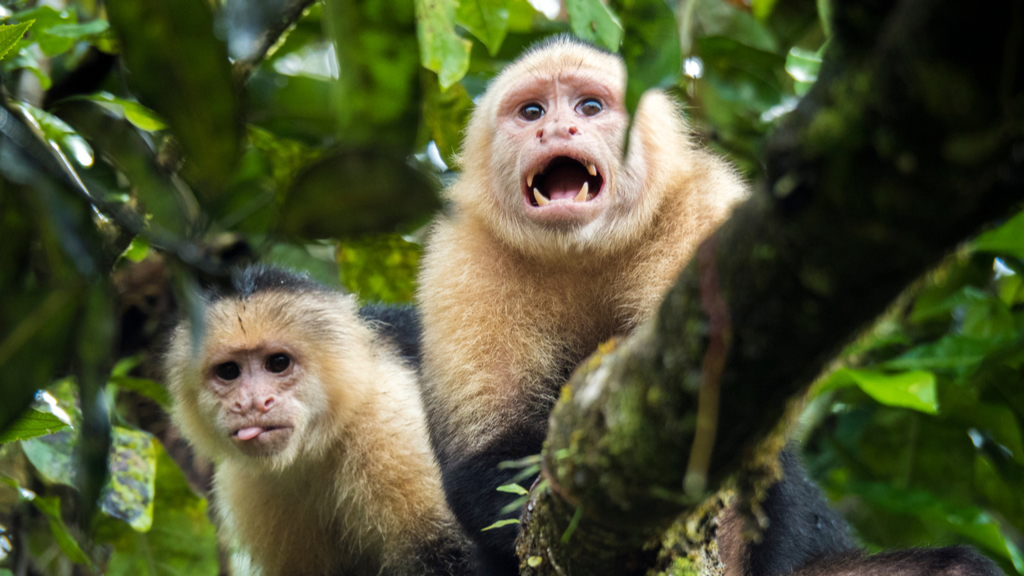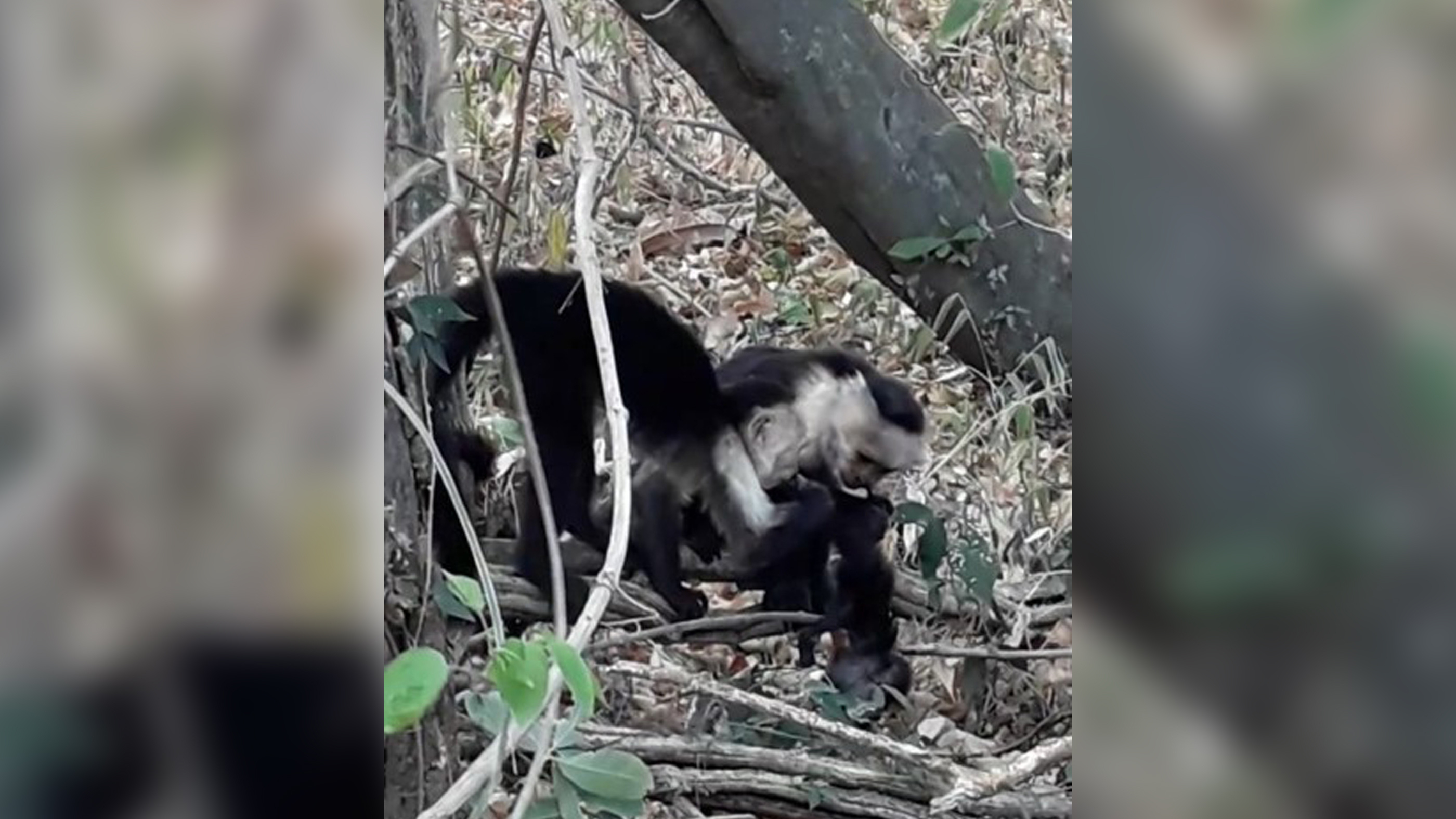Adorable monkeys caught commiting grisly act of cannibalism

Screams sounded from the treetops just before a baby capuchin monkey tumbled to its death. Soon after, a few of the infant's relatives gathered to consume the lifeless corpse — and scientists saw the whole thing.
Researchers have observed this particular population of white-faced capuchin monkeys (Cebus imitator) for more than 37 years, documenting their lives in the Santa Rosa National Park in Costa Rica. In all those years, scientists had never recorded a case of cannibalism among the monkeys; but that all changed on April 9, 2019.
The team described the grisly incident in a new report, published Oct. 16 in the journal Ecology and Evolution.
Related: Survival of the grossest: 8 disgusting animal behaviors
While observing a small group of monkeys, the scientists heard loud vocalizations from high in a nearby tree. A 10-day-old monkey, known as CT-19, fell to the ground, and its mother, called CT, scrambled down to collect the infant. CT tried to carry the baby back into the treetops, twice, with CT-19 clinging to her belly, but the infant fell both times and could no longer hang onto the mother. CT-19 fell motionless for several minutes, and soon, other monkeys gathered around to inspect the corpse.
Warning: What follows is a graphic description of what happened next.
A 2-year-old male approached the scene and began nibbling at the dead monkey's foot, chomping on its toes. "Though CT made no attempt to retrieve the corpse, she remained close by and vigilant," the authors wrote. An alpha female, age 23, then drew the body away from the young male and gnawed at the corpse in earnest, starting with the left foot; after half an hour, the female had consumed the infant's entire lower half, leaving only the head, chest and arms.
Sign up for the Live Science daily newsletter now
Get the world’s most fascinating discoveries delivered straight to your inbox.

The juvenile male managed to steal off with a bit of tail during this feast, but otherwise, the alpha female gobbled up most of CT-19. Technically, the male was a second cousin of CT-19, and the alpha female was the infant's grandaunt, the authors wrote.
Prior to this young capuchin's demise, only eight cases of cannibalism had been observed in Central and South American primates, the authors noted. Among primates, in general, the rare cases of cannibalism tend to coinicide with infanticide committed by unrelated adults. In other cases, closely related individuals may consume an infant after its natural death.
Related: The 12 weirdest animal discoveries
In this case, there is reason to believe that CT-19 was a victim of infanticide, the authors wrote.
"Immediately following the screams and the infant's fall to the ground, adult male PW was chased from the same area by an adult female," the authors wrote. Prior observations of capuchins suggest that females often chase the perpetrator away after witnessing infanticide, and although the scientists did not witness how or why CT-19 fell, they suspect the adult male PW may have pushed or otherwise attacked the baby.
White-faced capuchin monkeys typically eat both plants and small animals, such as lizards, squirrels and birds. When they capture animal prey, the monkeys tend to start by biting the face, so as to quickly silence the animal and to avoid being bitten themselves; the capuchins usually consume the entire animal, either alone or as a group. When cannibalizing one of their own, however, the monkeys behaved quite differently; only two monkeys took part in the meal and they left the entire upper half of the corpse untouched.
Most of the other monkeys nearby only inspected the corpse, or else made threatening gestures toward it, suggesting that this was "an unusual situation for the capuchins," the authors wrote.
The few monkeys that did turn to cannibalism may have done so for the nutritional benefits, the authors suggested. About two weeks after snacking on CT-19, the alpha female gave birth to her own young, meaning she had been in the late stages of pregnancy during the incident. The juvenile male had recently been weaned from his own mother, meaning he had just begun fending for himself when CT-19 tumbled from the treetops.
These scenarios hint that capuchins may turn to cannibalism when in desperate need of supplemental nutrients, but since primate cannibalism is so rarely observed, this is just a hypothesis. More case reports of primate cannibalism will need to be assessed to determine exactly why monkeys engage in this behavior, the authors concluded.
Originally published on Live Science.

Nicoletta Lanese is the health channel editor at Live Science and was previously a news editor and staff writer at the site. She holds a graduate certificate in science communication from UC Santa Cruz and degrees in neuroscience and dance from the University of Florida. Her work has appeared in The Scientist, Science News, the Mercury News, Mongabay and Stanford Medicine Magazine, among other outlets. Based in NYC, she also remains heavily involved in dance and performs in local choreographers' work.










